Harpers Ferry Historic District: Church, High & Potomac Streets
Introduction
Text-to-speech Audio
Structures included in the Harpers Ferry Historic District are: 156 Public Way, 163 Public Way, 167 Public Way, 100 Church Street (St. Peter’s Catholic Church), 110 Church Street (St. Peters Rectory), 168 Church Street, 180 Church Street, 190 Church Street, 200 Church Street, 241 Church Street, 144 High Street, 148 High Street, 154 High Street, 156 High Street, 160 High Street, 164 High Street, 168 High Street, 170 High Street, 175 High Street, 179 High Street, 180 High Street, 188-192 High Street, 189 High Street, 196 High Street, 195 High Street, 201 High Street, 200 High Street, 230 High Street (The Terrace Garage), 113 Potomac Street, 106 Potomac Street, 109 Potomac Street, 140 Potomac Street, 201 Potomac Street, and 221 Potomac Street.
Images
167 Public Way (#97)

163 Public Way (#96)
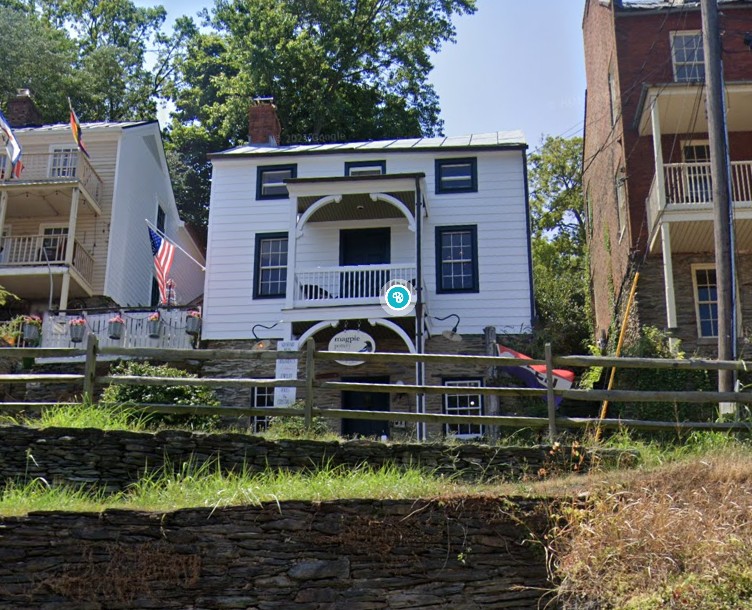
156 Public Way (#95)
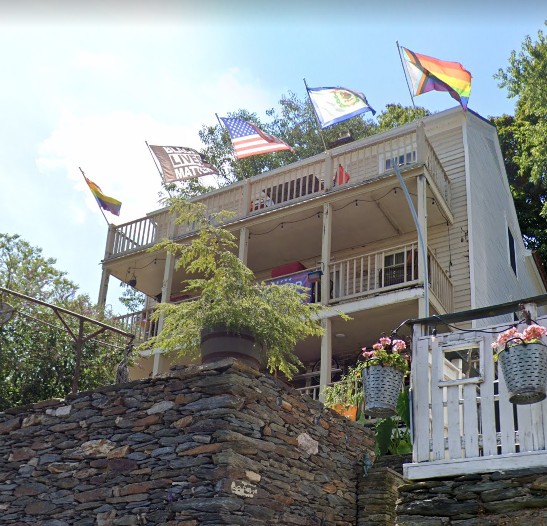
St. Peter's Catholic Church (#3)
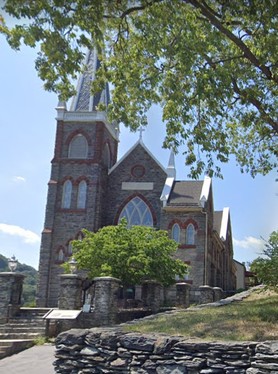
110 Church Street--St. Peter's Rectory (#4)
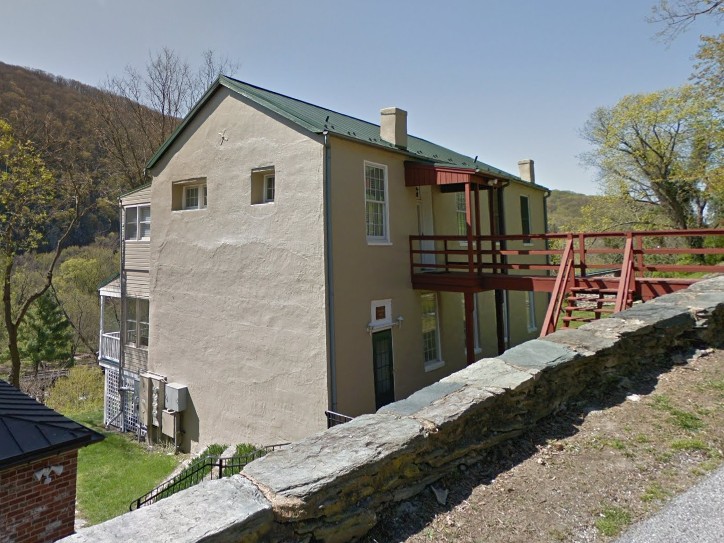
168 Church Street (#5)

180 Church Street (#6)
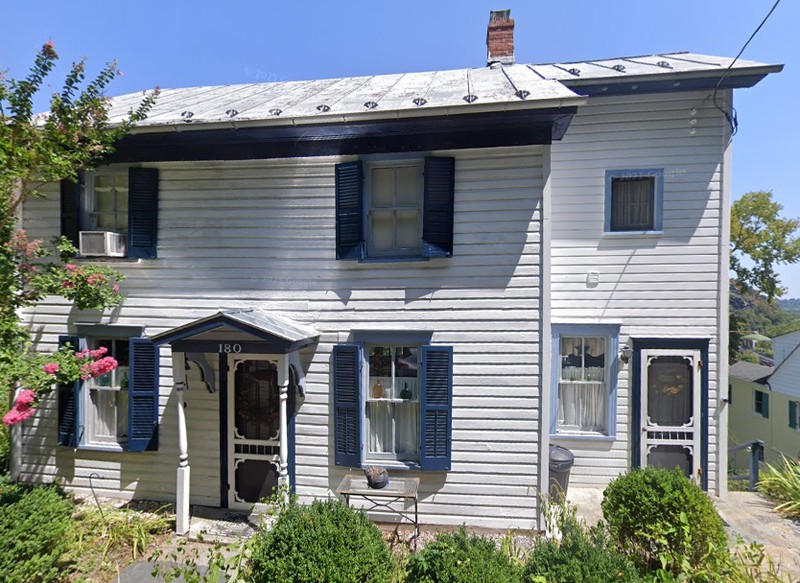
190 Church Street (#7)
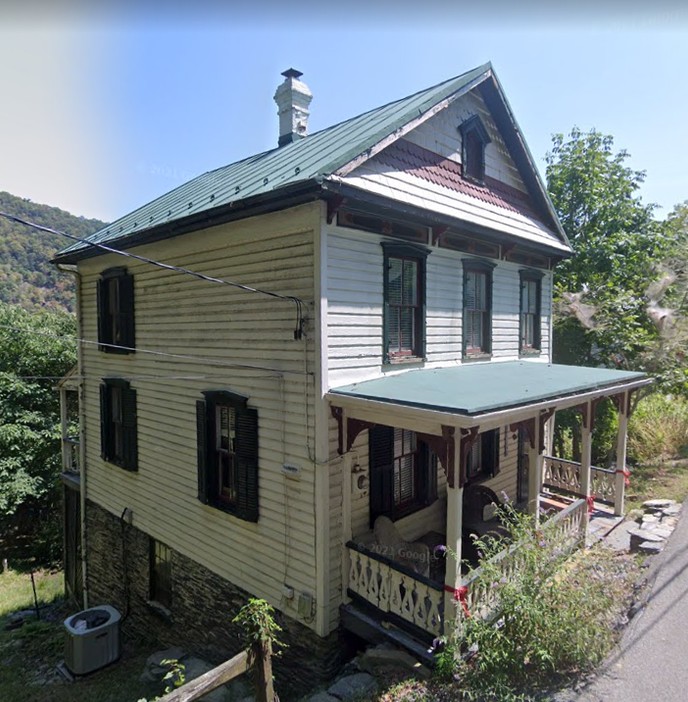
200 Church Street (#8)
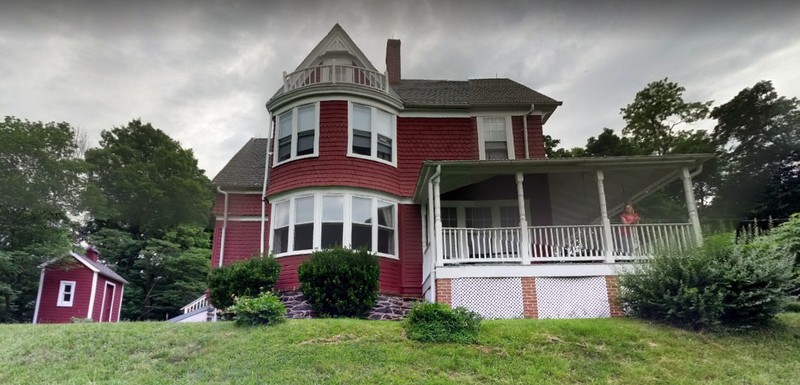
241 Church Street (#9)
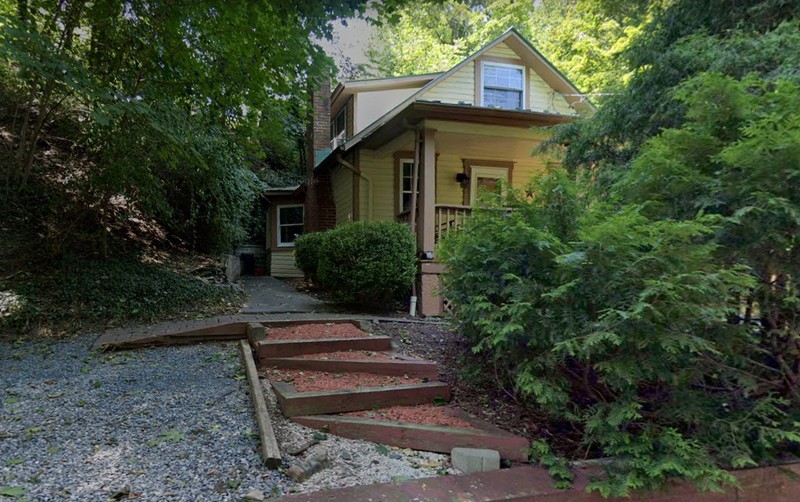
144 High Street (#57)
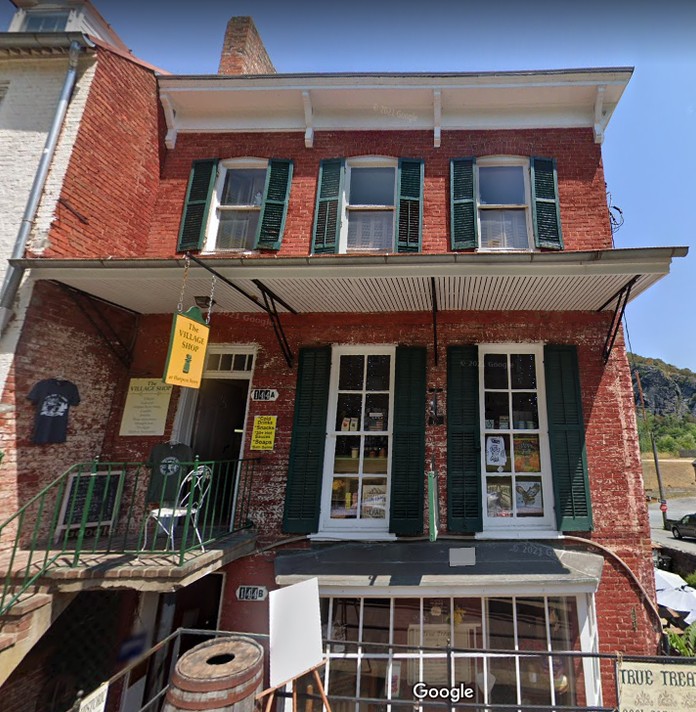
148 High Street (#58)
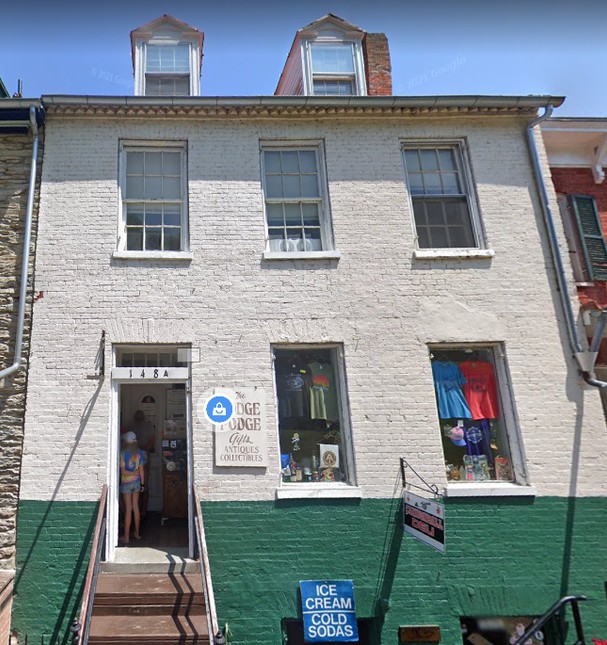
154 High Street (152?) (#59)
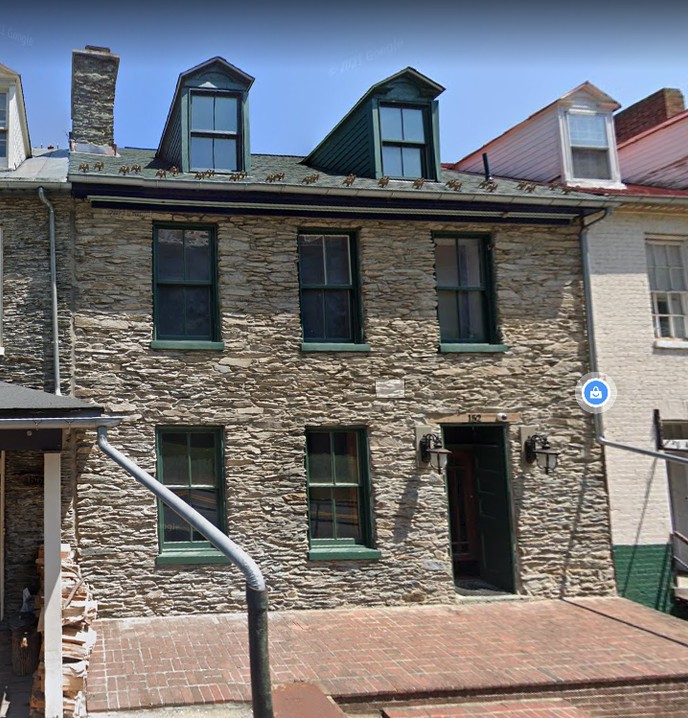
156 High Street (#60)
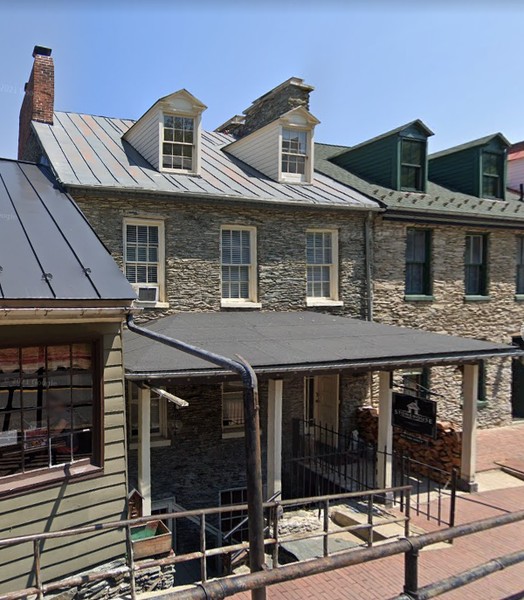
160 High Street (#61)
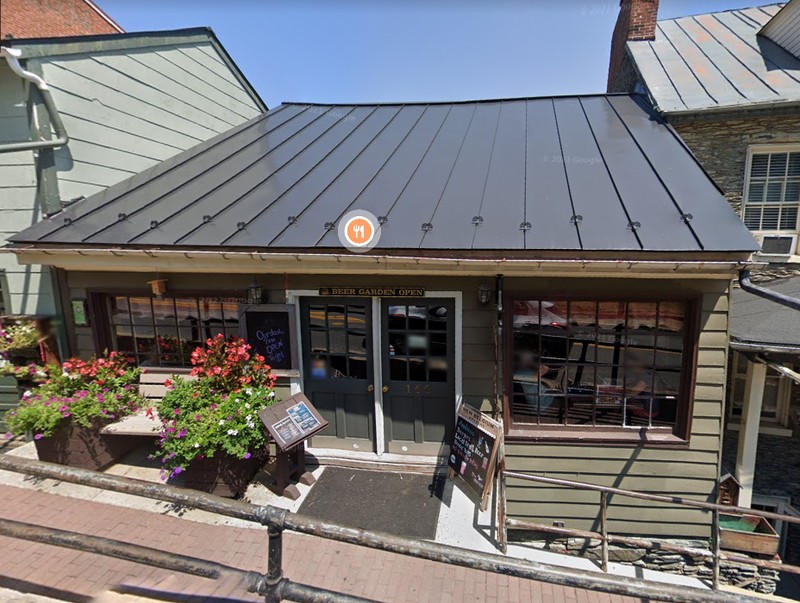
164 High Street (#62)
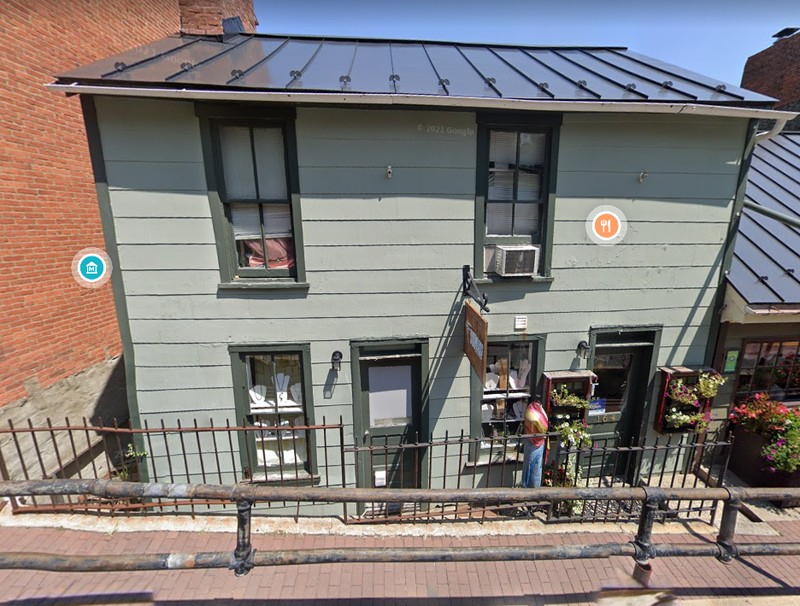
168 High Street (#63)
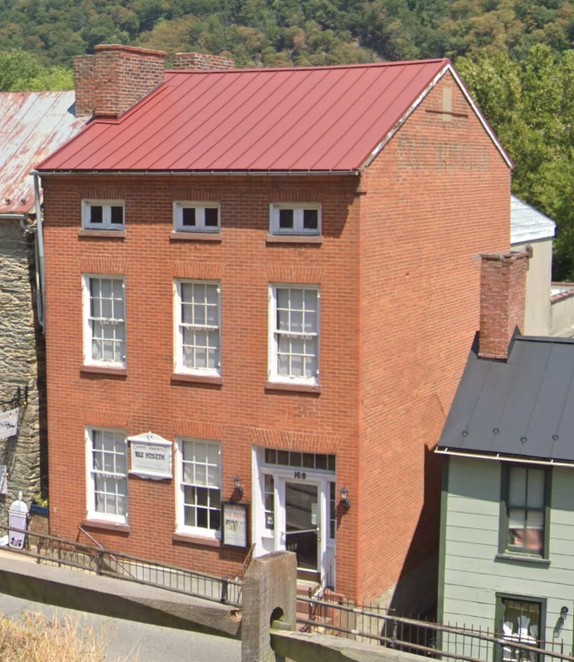
170 High Street (#64)

175 High Street (#65)
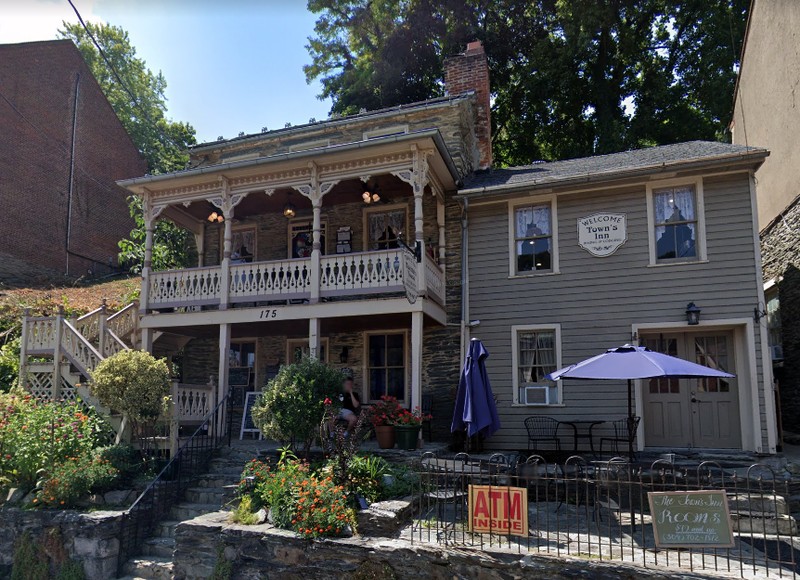
179 High Street (#66)
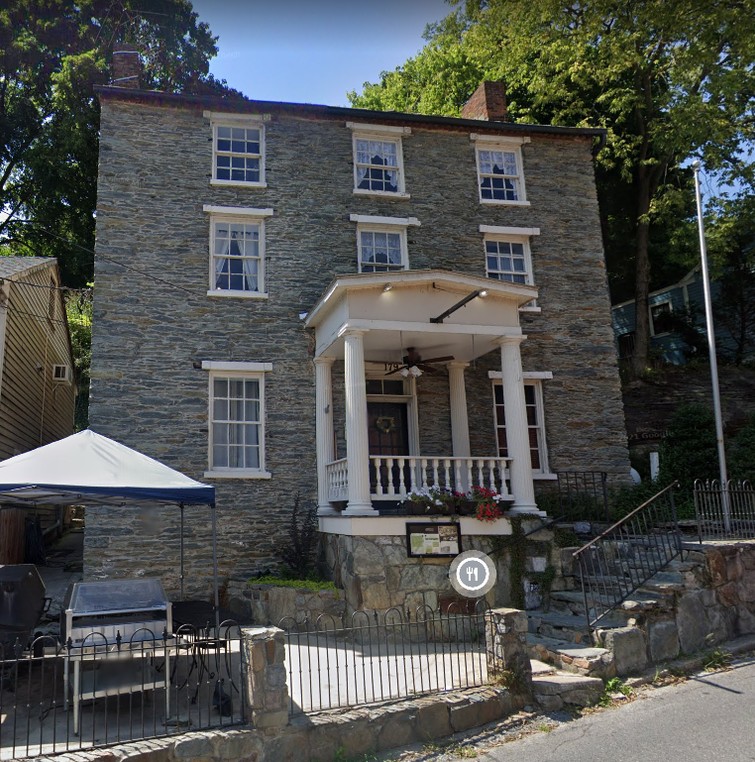
180 High Street (the modern addition to the right is a non-contributing structure in the Historic District) (#67)
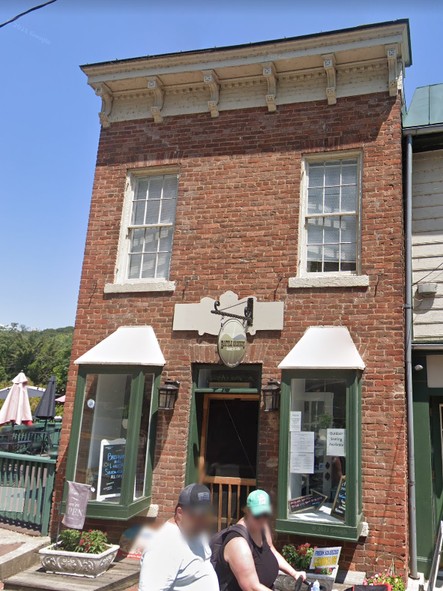
188-192 High Street (#69)

189 High Street (#70)
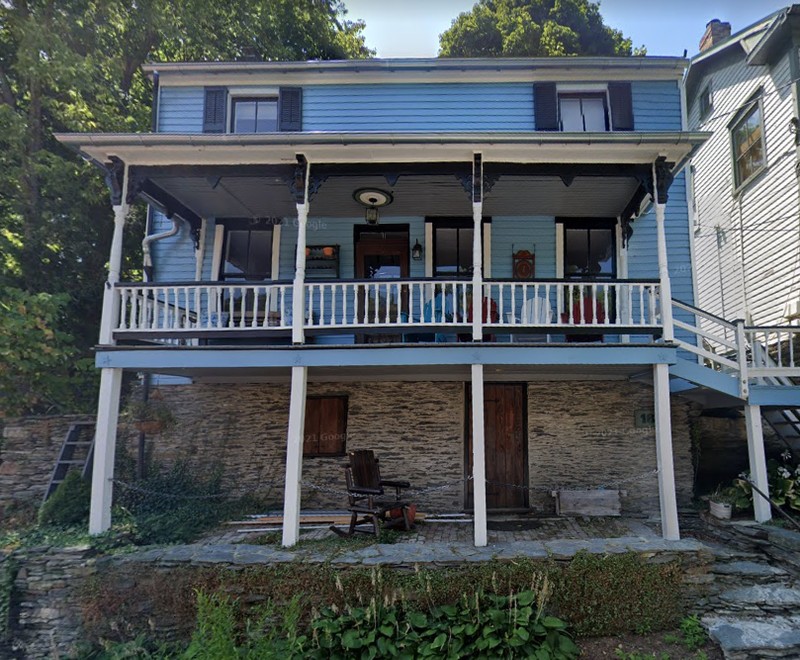
196 High Street (#71)
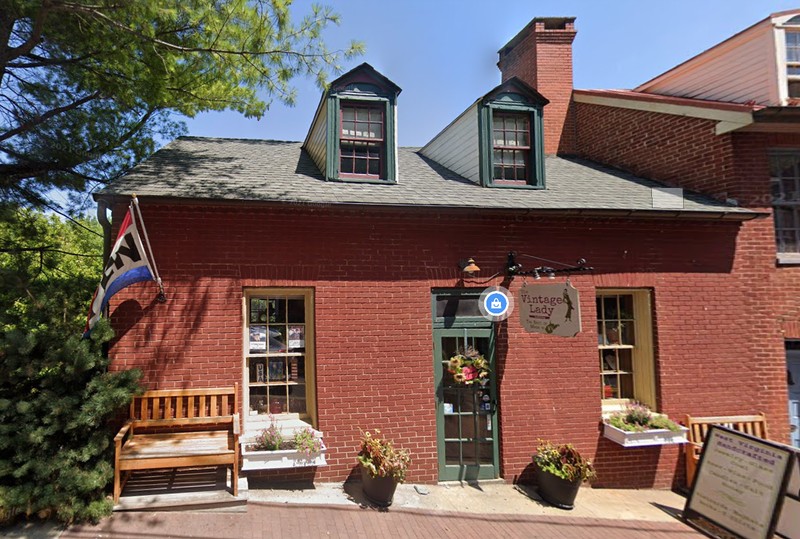
195 High Street (199?) (#72)
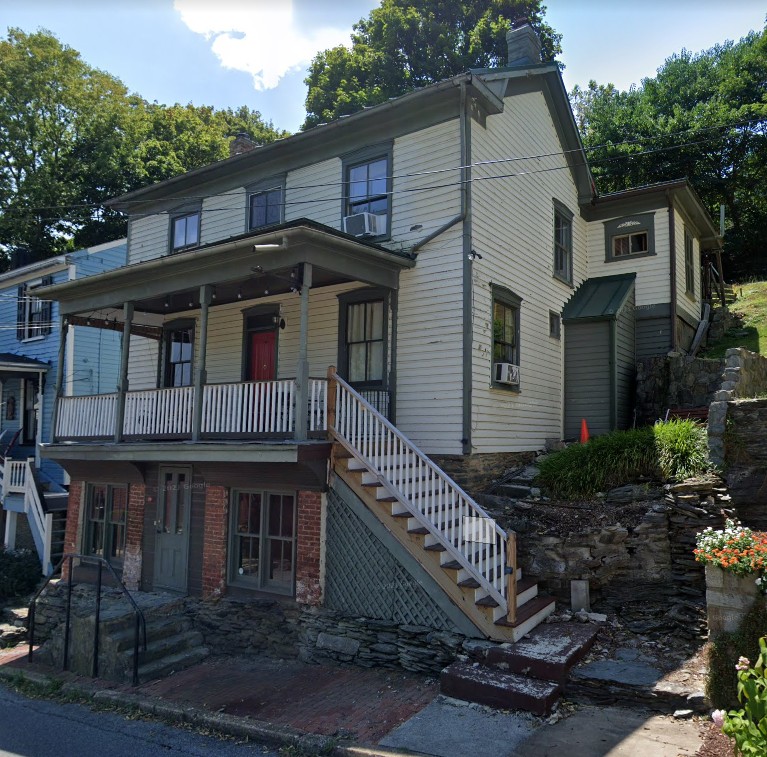
201 High Street (#73)
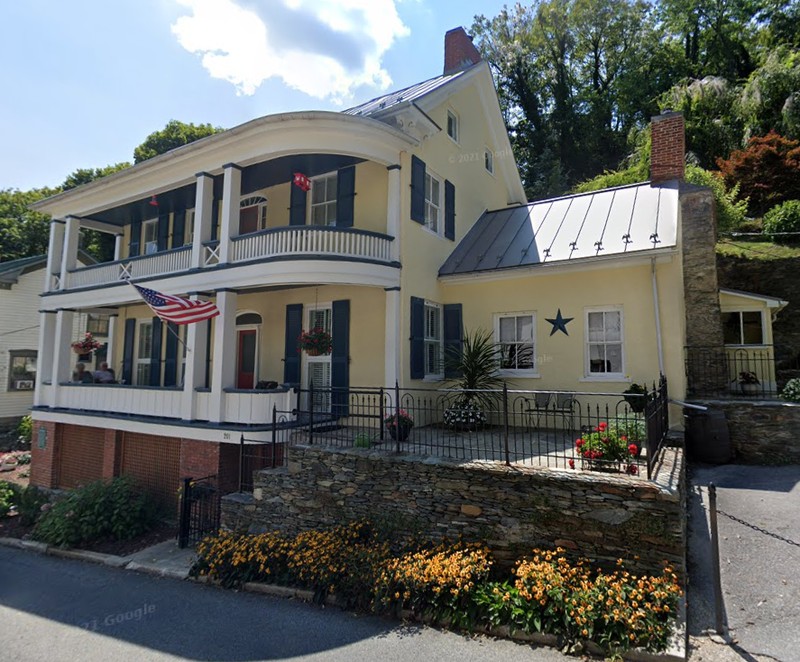
200 High Street (#74)
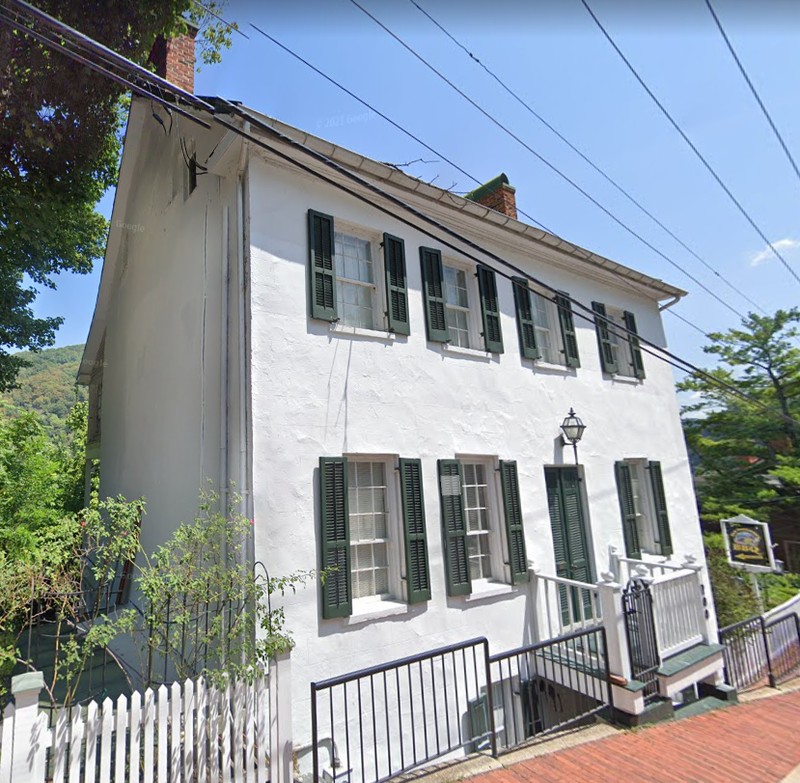
230 High Street (Terrace Garage) (#75)
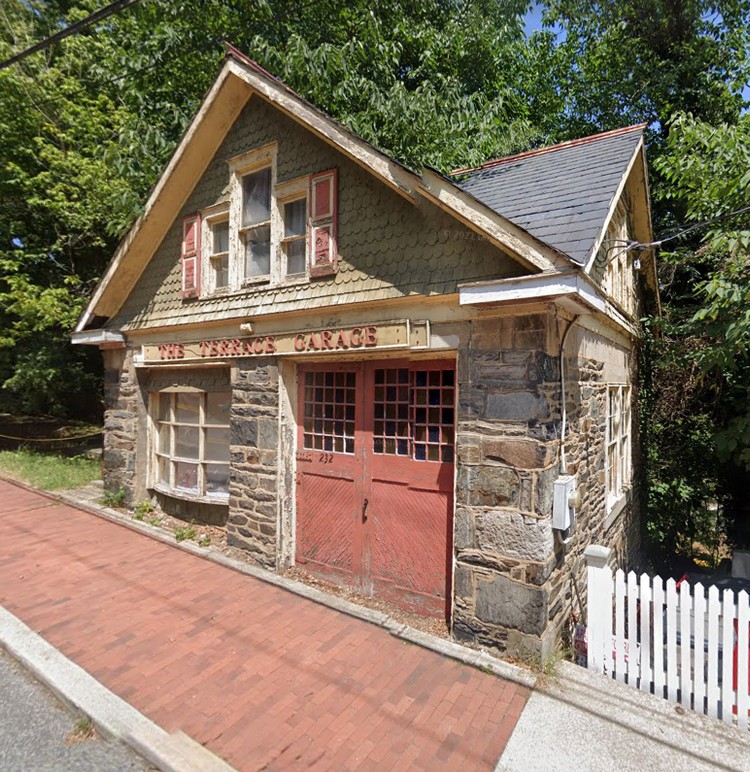
140 Potomac Street (#90)
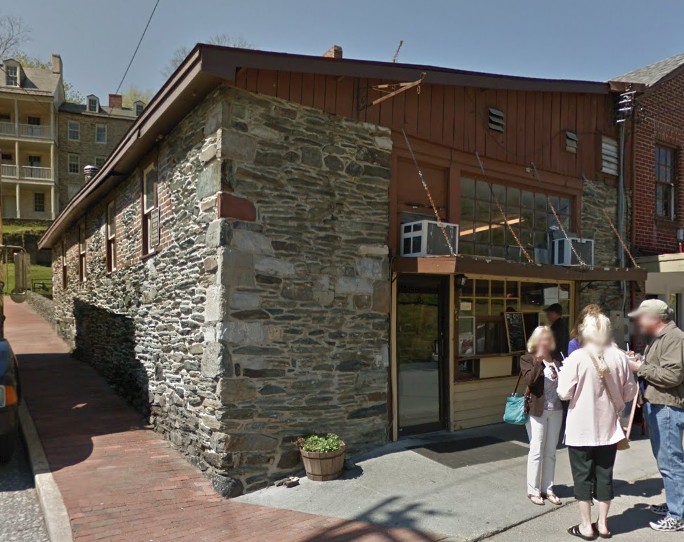
113 Potomac Street (#87)
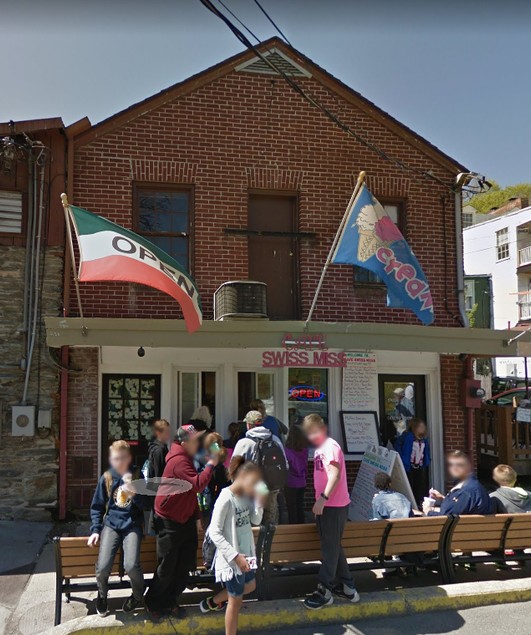
106 Potomac Street (#88)
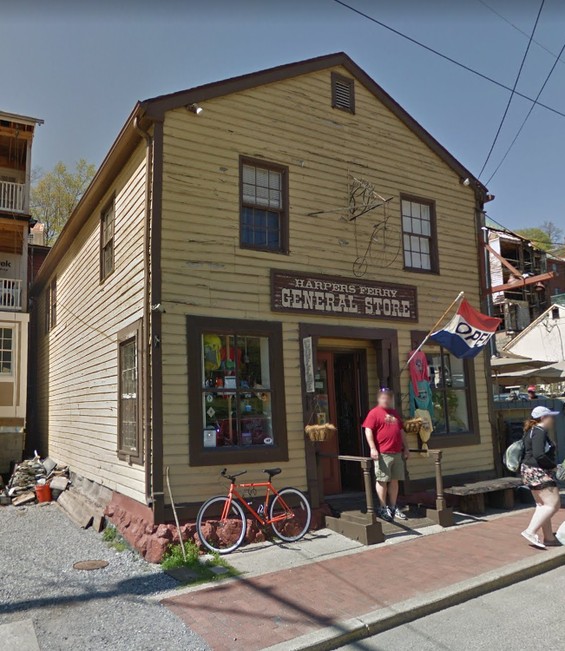
109 Potomac Street (#89)
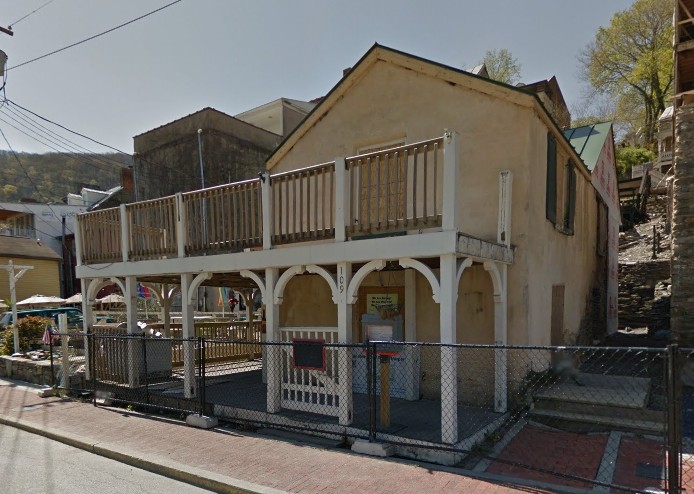
201 Potomac Street (#93)
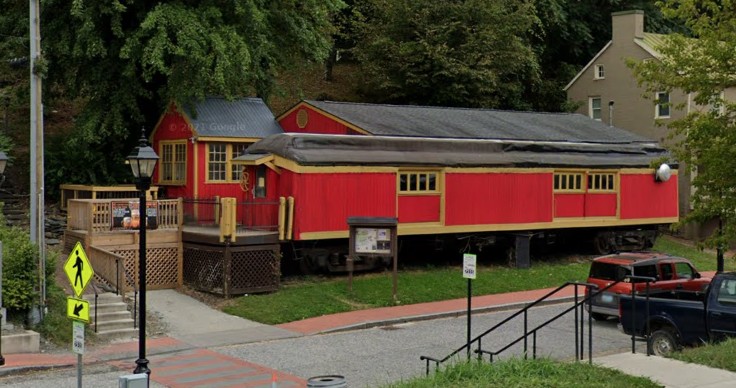
221 Potomac Street (#94)
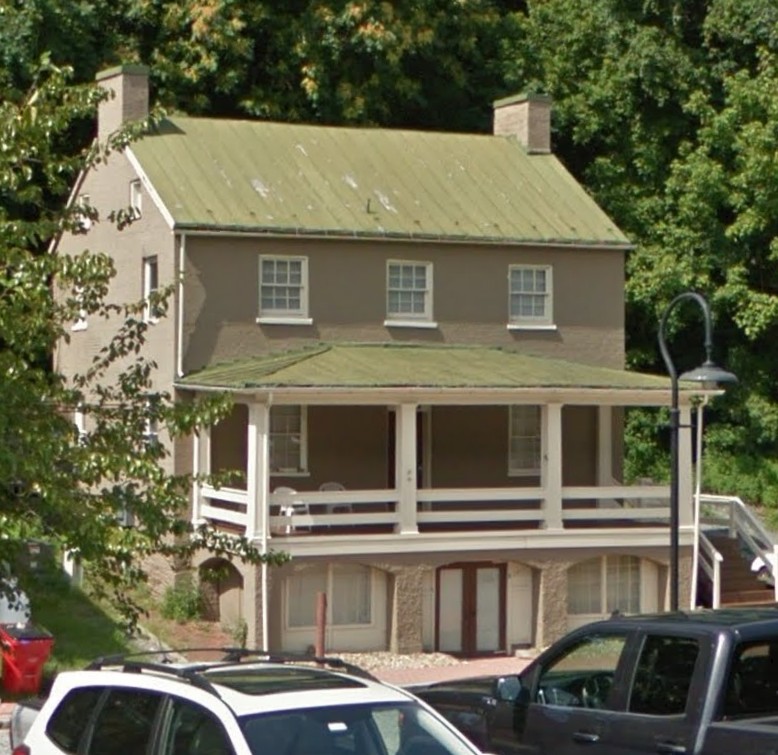
Plot map from 1979 National Register Nomination
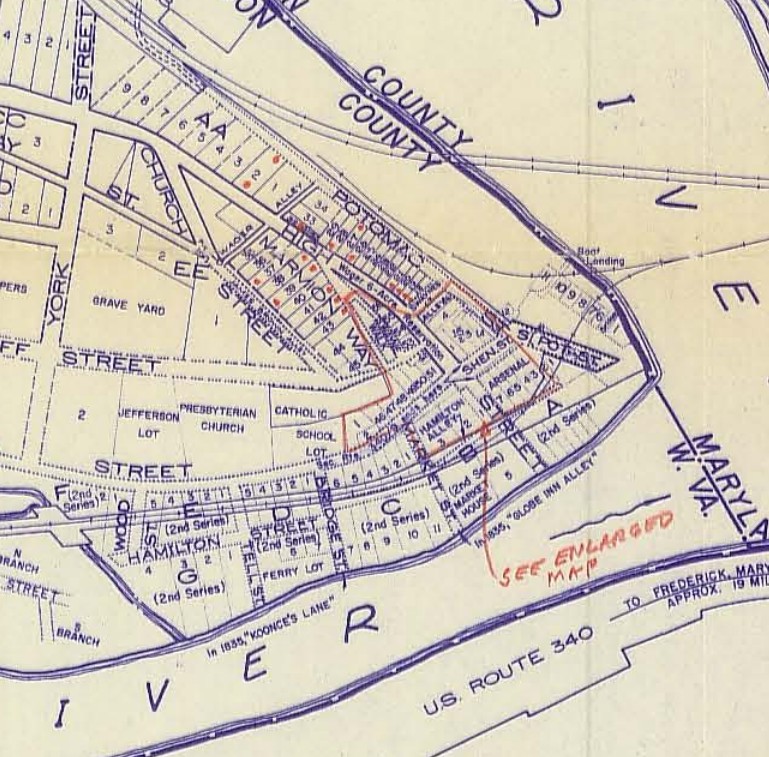
Plot map from 2009 Additional Documentation
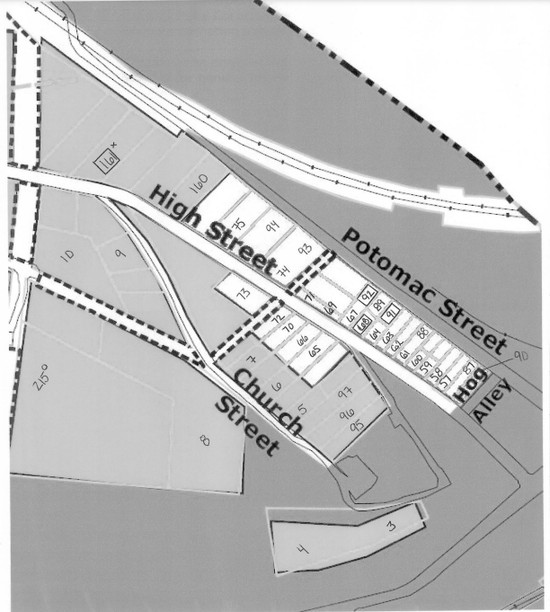
Backstory and Context
Text-to-speech Audio
----Public Way----
95. 156 Public Way
Federal style house. Beveled wood siding, asphalt shingle roof, rubblestone foundation. Three stories, four front bays. Low pitched end gable roof. Ranked bays with 1/1 and 6/6 double hung sash windows. Three verandas are trimmed with wooden millwork railing and square columns. Galleries added in 1985. This house suffered fire damage and was restored with modern materials in 1985. Property was originally owned by Gerald Wager, a prominent nineteenth century businessman who also lived here. Circa 1840. One contributing building.
Description from 1979 National Register Nomination: Wager Lot No. 43: “This building, a two story frame dwelling over a one story stone basement, measuring 29 by 28 feet was erected by Gerard Wager after 1835 but before 1848.”
96. 163 Public Way
I-house. German siding and rubblestone exterior, metal roof, rubblestone foundation. Three stories, three front bays. Low pitched end gable roof with one flush gable chimney. Ranked bays exhibit 6/6 double hung sash windows. Eyebrow windows decorate the third floor. Millwork railing anchors the second floor veranda. The first floor porch includes posts without railings. Street level floor is actually a daylight basement with panele wood door flanked by double hung sash windows. Side deck is enclosed with wooden fence. One replica square log shed outbuildings. Barn at rear of property was removed in the 1950s. The original owner of this building was John Savin. An artist lived here in 1859. The building was restored in 1976 by David Spinner. Formerly was known as “The Cellar Door.” Circa 1840. One contributing building.
Description from 1979 National Register Nomination: Wager Lot No. 42: “Fronting on Public Walk at the lower level end of the lot is a two story frame house, 23 by 18 feet, that was erected by John Savin in 1847-48.”
97. 167 Public Way
Old Kain/Shewebridge House. I-house. Brick and rubblestone exterior, metal roof, rubblestone foundation. Three and a half stories, three front bays. Low pitched end gable metal roof with flush chimney. Ranked bays with 6/6 double hung sash windows with bold wooden surrounds. Two front walled dormers have gabled roofs. Ornate tracery emphasizes the sidelights and transom around the second story entry on a veranda supported by plain wooden posts. Daylight basement entry is a paneled wood door adorned with three light transom. A pair of 6/6 double-hung sash windows are to the left. The original owner of this property was Dr. Philip Stephenson. Circa 1845. One contributing building.
Description from 1979 National Register Nomination: Wager Lot No. 41: “Fronting on Public Walk and High Street is a 3 ½ story brick house 24 by 33 feet in size. It was built by Dr. P.W. Stephenson between 1844 and 1859.”
----Church Street----
3. 100 Church Street
St. Peter’s Catholic Church. Stone exterior, with granite and sandstone accents, slate roof, coursed rubblestone foundation. The original church was constructed in 1830 and remodeled in 1896 to achieve a “Neo-Gothic” aspect. The terrace was lengthened and the original brick was replaced with granite and sandstone. The new bell tower and square steeple, and recessed portico were added in 2002, replacing the earlier central tower and entrance. A parapeted roof on the right balance the towering spire on the left. Gentle Gothic arches accent stained glass windows. The roof was replaced with composite shingle in the 1950s. During the Civil War, Father Michael Costello flew the Union Jack over the church, which spared it damage from the military action that was a near constant in Harpers Ferry. It was the only church in town to escape war damage. The building was listed in the National Register of Historic Places in 1972. Circa 1830, 1896. One listed building.
4. 110 Church Street
St. Peters Rectory. Stucco exterior, metal roof, stone foundation. Two stories, five front bays. Low pitched end gable metal roof with snowbird and two chimneys. Windows are 12/12 double hung sash. Front entry is on the second story. Deeply sunk windows appear on the gable end. Wood railing and column porch supports. A transom tops the entry. The building was restored in 1982 to return the building to its 1872 appearance. Additions to the rear in 2005 extended the covered porch with modern materials. It was listed in the National Register of Historic Places with the church in 1972. It is used as a priest’s residence and parish hall. Circa 1853, 1982. One listed building.
5. 168 Church Street
The Marmion Property. Colonial Revival House. Stucco exterior, asphalt shingle roof, stucco covered foundation. House sits below street level. One and a half stories feature three front bays. Steep end gable roof meets a side chimney. Two gable-roofed dormers are walled. Windows are 6/6 double hung sash and are trimmed by decorative shutters. Large pedimented portico shelters the front entry which is supported by slender Doric columns. Wooden cornice announces the roof wall junction. Front door has mullioned windows. Concrete threshold accents the entry. A daylight basement opens in the rear. Circa 1940. One contributing building.
6. 180 Church Street
I-house. Asbestos shingles and wood siding, metal roof, rubblestone foundation. Two and a half stories, five front bay I-house with right side two-story extension. End gable metal roof adorned with snowbirds, features one interior chimney. Windows are 2/2 and 6/6 double hung sash and are accented by working shutters. Pedimented portico over the entry is supported by milled brackets. Two front entries have wooden millwork screen doors. There is a side extension and rear deck. Circa 1870. One contributing building.
7. 190 Church Street
Gable front townhouse. Dutch lap wood exterior, metal roof, rubblestone foundation. Two and a half stories, three ranked bays with 2/2 double hung sash windows with bold lintels and working shutters. Pointed arch window in the front gable peak with is finished with fish scale shingles. The chimney is centrally located. Decorative cornice features a narrow pent and frieze under the gable. Flat porch roof is supported by milled brackets and four turned posts, joined by flat jigsaw railing across the full width of the house. There is an above ground basement and a rear one story shed-roofed porch. This house was occupied by free Blacks in 1860. It is one of the two houses on Wager lot 35. The other house fronts High Street. Circa 1840. One contributing building.
Description from 1979 National Register Nomination: Wager Lot No. 35: “These two extant houses were erected by William McGraw between 1841 and 1845. Fronting on High Street is a two story frame house about 30 by 30 feet. Fronting on Clay or Church Street, at the upper end of the lot is a two story frame house about 21 by 18 feet. #36, 2-story Wager house, before 1935.
8. 200 Church Street
Queen Anne house. Highacre Private Club. Frame, shingle wood exterior, asphalt shingle roof, stone foundation. Two and a half stories, four front bays. Cross gable roof with center chimney and two hipped dormers. 6/2 and 1/1 double hung sash windows. Wrap around veranda and double front doors. Tall ornate door at stair landing. Veranda supported by nine Doric columns. Turned railings edge the veranda and stairs. Lattice work at the base of the veranda. Original owner was New York paper tycoon, William Luke. The barn and outhouse are nonextant. Built in 1887. One contributing building.
9. 241 Church Street
Old Quick House. Bungalow. Dutch lap wood siding, metal roof, and rubblestone foundation. Two stories, three front bays. Steeply pitched front gable metal roof with two chimneys, one of block and one of brick. Front bays have 6/1 and 1/1 double hung sash windows with bold wood surrounds. One large shed dormer that is a later addition, and a front veranda. Bold wood trim surrounds entry. Wooden railing and turned porch supports. Steps climb to the left side with wood railing. A curved bay window decorates the east façade. Circa 1930. One contributing building.
Demolished since original National Register Nomination:
Armorer’s house. Fitzpatrick, Edward, builder. Circa 1843. Wager Lot 39 on Church Street: “Fronting on High Street is a 2 ½ story stone dwelling 24 feet by 24 feet with a two story stone addition at the east. This house was erected by Edward Fitzpatrick in 1843-44. At the upper or Clay end of the lot is a two story frame house, 20 by 18 feet, that was also built by Fitzpatrick in 1843-44.”
Block EE/Lot 1--Highacre Cabin
----High Street----
57. 144 High Street
Federal style building. Brick exterior, metal roof, and rubblestone foundation. Three stories, three front bays. Low pitched roof with two chimneys, 4/4 double hung sash windows on the first story and 1/1 double-hung sash windows on the second story, large oriel window on the street level. Elliptical arches span the second story windows. The entry is accented by a four-light transom. Circa 1841. One contributing building.
Description from 1979 National Register Nomination: Armory Dwelling No. 15, Wager No. 19: “This extant house fronts on High Street. It was built by Charles Button in 1841 of brick, 2 ½ stories over a full basement and had a porch front and rear, was covered with a shingle roof. Dimensions are 30 by 22 feet.”
58. 148 High Street
Side Hall building. Brick exterior, metal roof, rubblestone foundation. Three and a half stories, three front bays. End gable metal roof has two pedimented dormers, ranked bays and two chimneys. Windows are 6/6 double hung sash. Entry is accented by four-light transom. This building was rented to an armorer in 1859 and served as headquarters for the Union Army’s Provost Marshall in 1865. Circa 1820. One contributing building.
Description from 1979 National Register Nomination: Armory Dwelling No. 16, Wager Lot No. 20: “This extant dwelling fronts on High Street. The house was built by Israel Russell in 1839-41. The 3 ½ story stone house measures 34 by 23 ½ feet, has a slate roof and cellar.”
59. 154 High Street
Side hall building. Stucco exterior, asphalt shingle roof, and rubblestone foundation. Three and a half stories feature three ranked bays with 2/2 double hung sash windows, a flush gable left side chimney, and two gable-roofed dormers. The house was built by Gerard B. Wager and used as his residence until 1847, rented to an armorer in 1859, and served as the office of the Ordinance Department of the Union Army in Harpers Ferry in 1865. Constructed 1835-6. One contributing building.
Description from 1979 National Register Nomination: Armory Dwelling No. 17, Wager Lot No. 21: “This extant dwelling fronts on High Street. The dwelling was built by Gerard B. Wager about 1835-36 and was used as his residence. It is a 3 ½ story stone house, 30 by 26 feet, with a cellar.”
60. 156 High Street
Side hall building. Stone exterior, metal roof, and stone foundation. Two and a half stories, three front bays. Side gable metal roof features a left flush gable chimney. Ranked bays contain 6/6 double hung sash windows. There are two asymmetrical dormers and a three light transom over the entry. Square pillars support the porch roof. Exterior stucco finish removed by the homeowner in 2006. The property was rented by an armorer in 1859 and later became the Office of the Union Quarter-master in 1865. William McGraw was the original owner. Circa 1820. One contributing building.
Description from 1979 National Register Nomination: Armory Dwelling No. 18, Wager Lot No. 22: “This extant structure fronts on High Street. The dwelling is a 3 ½ story stone house with basement and measures 30 by 26 feet. The house was erected in 1841 by William McGraw.
61. 160 High Street
Side gable building. Beveled wood siding, terne metal roof, and rubblestone foundation. One story, three-bay building is dominate by mullioned windows and double stable doors. Front stop. Twentieth century two-story rear addition. Beveled wood exterior with two bays of 6/6 ranked double-hung sash windows. During the Civil War this was a vacant lot owned by Alexander Kelly. The house was documented in 1893, but may have been built as early as 1865. Circa 1870. One contributing building.
Description from 1979 National Register Nomination: No. 23. Victorian frame 1-story, before 1893.
62. 164 High Street
Federal style building. Asbestos shingle siding, terne metal roof, and stone foundation. Two story house with four front bays feature 2/2 double hung sash windows. End gable roof abuts a left side chimney. There are two entries with paneled doors and transoms. Three story rear addition. Asbestos exterior with two bays of ranked 2/2 double-hung sash windows. This house was owned by Noah H. Swayne in 1859 and rented to Alexander Kelly, a Blacksmith. His Blacksmith shop abutted the rear of this building, facing Potomac Street. Circa 1840. One contributing building.
Description from 1979 National Register Nomination: Wager Lot No. 24: “This extant house was owned by Noah H. Swayne in 1859. It fronts on High Street and is a two story frame house measuring 24 by 20 feet with a full basement and a gable roof. It was constructed by either Patrick Farrell or Michael Gallaher between 1839 and 1844.”
63. 168 High Street
Side hall building. Brick exterior, metal roof, brick and concrete foundation. Three story house with three front bays features a low pitched end gable roof with left side flush chimney and eyebrow windows on the third story. Windows are 6/6 double hung sash. A six-light transom and sidelights surround the right side entrance. Neoclassical square pilasters flank the entry. Brick lintels and arrayed in a soldier course above the windows. Basement entry below the street level grade. Alexander Kelly was the original owner who rented it to an armorer in 1859. Circa 1850. One contributing building.
Description from 1979 National Register Nomination: Wager Lot No. 25: “The extant house is a three story brick house, fronting 22 feet on High St. by 28 feet deep. It has a two story frame porch on the east. The building was erected by Alexander Kelly between 1844 and 1859.”
64. 170 High Street
Federal I-house. Coursed rubblestone exterior, metal roof, coursed rubblestone foundation. Two stories, three front bays. End gable metal roof adorned with snowbirds with 2.2 double hung sash windows. Front veranda and gallery. The second floor entry is off center. A transom accents the center hall. Wooden railing and columns on First and second floor verandas were added more recently. The house was originally owned by Robert Wallace and rented by an armorer in 1859. 1839-40. One contributing building.
Description from 1979 National Register Nomination: Armory Dwelling No. 19, Wager Lot No. 26: “This extant house fronts on High Street. It is a three story stone house with cellar and measures 24 by 20 feet. The building was erected by Robert Wallace in 1839-40.”
65. 175 High Street
Federal I-house. Coursed rubblestone exterior, metal roof, course rubblestone foundation. Three stories, three front bays. Low pitched end gable metal roof abuts a large side chimney. Mouse tooth frieze accents the roof wall junction. Ranked bays contain 2/2 double hung sash windows. Eyebrow windows decorate the third floor. Second floor porch features wooden millwork railings and columns that are a twentieth century addition. Very ornate jigsaw trim and frieze on the gallery. There is a coursed rubblestone wall at street level. Two story, two bay addition on the right side of the building. Originally owned by Edward Fitzpatrick, then by Mrs. Richard D. Doran in 1859, and rented to Rodman Burk, a stone cutter and mason. Circa 1820. One contributing building.
Description from 1979 National Register Nomination: Wager Lot No. 39: “Fronting on High Street is a 2 ½ story stone dwelling 24 feet by 24 feet with a two story stone addition at the east. This house was erected by Edward Fitzpatrick in 1843-44. At the upper or Clay end of the lot is a two story frame house, 20 by 18 feet, that was also built by Fitzpatrick in 1843-44.”
66. 179 High Street
Greek Revival building. Coursed rubblestone exterior, metal roof, rubblestone foundation. Three stories, three ranked bays. Low pitched side gable roof engages a pair of flush chimneys. Transom illuminates the center hall and 6/6 double hung sash windows feature bold wooden lintels and sills. Low pedimented portico is supported by two Doric columns and two Doric pilasters engage wooden spindle railing. Metal railing traces the front stairs and stoop. Brick chimney tops suggest damage during the Civil War. Two story rear extension enclosed rear porch in 2007. Stone patio and terrace enclosed by iron fence. Michael Doran was the original owner of this building. Circa 1840. One contributing building.
Description from 1979 National Register Nomination: Wager Lot No. 38: “A 2 ½ or three story stone house, erected by Michael Doran in 1859 fronts on High Street. This structure measures about 33 feet by 20 feet.”
67. 180 High Street
Italianate House. Brick exterior on left side and lapped wood on the right side, metal roof, and rubblestone foundation. Two story center hall house on the right side has three front bays. The metal shed roof slopes to the rear, supported in front by a bold broad cornice with milled brackets. Two display windows have replaced the original 6/6 double hung sash windows. Frame addition in the rear of the building and side extension. Second story windows are 6/6 double hung sash. House was owned by Thomas Boerly in 1859 and probably occupied by carpenter John Hyatt. Constructed in 1844. One contributing building.
69. 188-192 High Street
Duplex. Brick exterior, metal roof, and rubblestone foundation. Two and a half stories, six front bays. The low pitched end gable roof abuts an exterior chimney. Six ranked bays feature 6/6 double hung sash windows. Four gable roofed dormers also contain 6/6 double hung sash windows. Oriel display window on the left side of the façade. Windows feature wooded surrounds and stone sills. A transom accents the front entry which has a stone threshold. There is an exposed basement in the rear. Wager Lot 30 was occupied in 1859 by dressmaker Anna McDonald, and Wager Lot 31 was occupied by armorer John Yantis. Circa 1840. One contributing building.
Description from 1979 National Register Nomination: Wager Lots No. 30, 31 and 32: “The large double brick on these lots is extant and has been restored. The one story brick house, in ruins in 1955, has been reconstructed. In 1841-43 in Lots 30 and 31 was constructed a double brick house 2 ½ stories with overall dimensions of 50 by 22 feet. Samuel Breitenbaugh built the house. A second house on Lot No. 31 was built by Marin Grace after 1844 and prior to 1849.”
70. 189 High Street
I-house. Beveled wood siding, metal roof, rubblestone foundation. Three stories, three front bays. End gable roof engages a gable end chimney. Three unranked bays feature 2/2 double hung sash windows and bold wooden trim and working shutters. Decorative turned wood porch supports are joined by railing on the second floor veranda. Plain squared columns support the first floor veranda. Center hall has a transom. There is a rubblestone wall at the base of the street level entrance. Large two story rear extension has a shed roof. Daylight basement serves as ground level entry. This house was occupied by free Blacks in 1859. The building was originally constructed of stone and owned by the Wager family. Circa 1820. One contributing building.
Description from 1979 National Register Nomination: Wager Lot No. 35: “These two extant houses were erected by William McGraw between 1841 and 1845. Fronting on High Street is a two story frame house about 30 by 30 feet. Fronting on Clay or Church Street, at the upper end of the lot is a two story frame house about 21 by 18 feet. #36, 2-story Wager house, before 1935.
71. 196 High Street
I-house. Brick exterior, asphalt shingle roof, concrete foundation. House rises one and a half stories and contains three front bays with 6/6 double hung sash windows. The center hall is accented by a transom. A right side chimney meets a low pitched end gable roof. Two gabled dormers feature decorative trim in their peaks. This building was restored in 1955. In 1859, it was the home of a local dentist. Circa 1859. One contributing building.
Description from 1979 National Register Nomination: Wager Lots No. 30, 31 and 32: “The large double brick on these lots is extant and has been restored. The one story brick house, in ruins in 1955, has been reconstructed. In 1841-43 in Lots 30 and 31 was constructed a double brick house 2 ½ stories with overall dimensions of 50 by 22 feet. Samuel Breitenbaugh built the house. A second house on Lot No. 31 was built by Marin Grace after 1844 and prior to 1849.”
72. 195 High Street
Federal I-house. Dutch lap siding, metal roof, rubblestone and brick foundation. Two and a half stories, three front bays. End gable metal roof adorned with snowbirds with flush chimney on each. Three ranked bays with 2/2 double hung sash windows and decorative peaked wooden lintels. Second floor windows feature working shutters. Porch is supported by four turned posts joined by turned spindle railing. Daylight basement under the front porch is faced with brick and rubblestone and has 2/2 double hung sash windows and a door. Double sided steps access basement entry. Wooden stairs on the right access the center hall which has a transom. Two rear extensions. Original owner was William McGraw. Circa 1840. One contributing building.
73. 201 High Street
Federal house. Stucco covered house, metal roof, rubblestone and brick foundation. Two and a half stories, four front bays. End gable metal roof with two chimneys. Ranked bays with 2/2 and 1/1 double hung sash windows with wooden frames. Leaded fanlight accents the entry system which is flanked by Doric pilasters. Stacked verandas are supported by brick pylons at ground level. They feature bold squared columns and span the full width of the façade. Left gable end is slightly bowed with three ranked bays to 2/2 double hung sash windows. Lattice skirting spans the brick pylons. Rear extension is newer. The original owner of this building was William Anderson. It was purchased by the U.S. Government after construction and sold into private hands by 1852. At the time of John Brown’s raid it was owned by armorer James Mills. Constructed in 1826. One contributing building.
Description from 1979 National Register Nomination: Armory Dwelling No. 55, Camp Hill (Methodist Episcopal Church Lot): “This residence is located on the south side of Washington Street and its lot abuts on the northwest boundary of the Wager Reservation. The two story stone house measures about 32 by 18 feet and was erected by William Anderson in 1828-29.”
74. 200 High Street
Massed plan house. Stucco exterior finish, metal roof, and stucco over stone foundation. Three stories, four front bays. End gable metal roof meets flush gable chimneys. Bays contain 6/6 and 1/1 double hung sash windows. Working shutters. Small porch with wooden railing accents the entry. Rear extension features two stacked galleries. The lower gallery has turned spindle railing and the upper one features turned spindle railing flanked by pairs of 6/6 double-hung sash windows enclosing ends of the gallery. The house was originally owned by Dr. Nicholas Marmion. It was purchased by the U.S. Government and rented to armorers. Storer College owned the building in the 1880s, and used it for a dormitory/boarding house for students. 1829. One contributing building.
Description from 1979 National Register Nomination: Armory Dwelling No. 20, Block AA, Lot 1: “This house is located just northwest of the Wager Six Acre Reservation and fronts on the north side of High Street. The three story stone house was erected by Dr. Nicholas Marmion in 1829.”
75. 230 High Street
The Terrace Garage. Queen Anne style. Stone and shingle exterior, slate roof, rubblestone foundation. One and a half stories include two front bays. The cross gable slate roof has one chimney. Three-light window in the gable peak is arrayed in a Palladian arrangement, with 1/1 double hung sash windows, decorated wood surrounds and decorative shutters. A mullioned bay window replaces one garage bay. Stained glass mullioned windows on both sides of the garage doors. Wood stair and deck give access to the attic door on the left side. This was the first auto garage in Harpers Ferry. It belonged in Highland Terrace. Original owner was George Bready. 1914. One contributing building.
Description from 1979 National Register Nomination: The Terrace Garage Block AA, lot 3: “Directly across Washington Street from the Bready House stands the two story stone garage built in 1914 by George Bready. It was probably the first automobile garage built in town.”
----Potomac Street----
87. 113 Potomac Street
Gable-front building. Brick exterior, asphalt shingle roof, obscured foundation (probably stone). Two stories, six front bays, gable front roof with 6/6 double hung sash windows. Display window. Shed roof over store front and sidewalk. Building has been adaptively reused. Circa 1930. One contributing building.
88. 106 Potomac Street
Gable front building. Beveled wood exterior, asphalt shingle roof, and rubblestone foundation. Two and a half stories have three front bays. Second story bays contain 6/6 double hung sash windows. Two display windows flank the double entry which is accented with decorative turned pillars. Decorative corner boards and intricate architectural details set off this modest building. Circa 1920. One contributing building.
89. 109 Potomac Street
Armory house. Stucco and wood exterior, metal roof, rubblestone foundation. Two story gable front house with a metal roof and a very large chimney. Windows are 8/8 double hung sash. First and second floor verandas have wooden columns and railing. There is one rear extension. The extensive millwork is a twentieth century addition. House was rented to an armorer in 1859, but was originally owned by Michael Foley. Circa 1840. One contributing building.
Description in 1979 National Register Nomination: . Armory Dwelling No. 11, Wager Lot No. 27: “This extant house fronts on Potomac Street. The house was built by Michael Foley between 1836 and 1844. The residence is a two story stone dwelling with a gable roof and is 30 by 22 feet in size.”
90. 140 Potomac Street
Coffee shop constructed from the ruins of an older building (circa 1830). Rubblestone and T-111 siding, asphalt shingle roof, and stone foundation. One story, two front bays. Shed roof with mullioned windows. This is an adaptive reuse of an extremely old Harpers Ferry building’s foundation. The building’s scale and stonework are compatible with the historic town and the building was constructed within the period of significance. Circa 1950. One contributing building.
93. 201 Potomac Street
Railroad Car. Metal exterior, metal roof, on blocks for foundation. One story, three front bays. This train car has been converted for use as a business. It expresses Art Nouveau curves in the roof and sliding doors. A deck links the car and a small multi-light side gable building that is a later addition. The train is associated with the rise of tourism in Harpers Ferry and the changing nature of local commerce. Circa 1915. One contributing structure.
94. 221 Potomac Street
I-house. Brick house, metal roof, rubblestone foundation with stucco finish. Two stories, three front bays. Low pitched end gable metal roof and twin flush gable chimney. Bays have 6/6 double hung sash windows and mullioned casement window. Front veranda with heavy wooden squared columns and railing. Arched windows span the masonry porch supports. Porch is a newer addition. This house is located directly across the street from the site of the main armory building and served as the home of armory officials. The original owner of the house was the U.S. Government. Circa 1830. One contributing building.
Description from 1979 National Register Nomination: Armory Dwelling No. 12, Block AA, Lot 2: “This house fronted on Potomac Street and was located about opposite to the Musket Factory Building No. 7. The residence, a two story brick structure was erected at some time between 1810 and 1834.”
Sources
“National Register of Historic Places Inventory—Nomination Form: Harpers Ferry Historic District.” Accessed May 19, 2022. https://wvculture.org/wp-content/uploads/2021/03/Harpers-ferry-historic-district.pdf.
“Harpers Ferry Historic District (additional information).” National Register of Historic Places Continuation Sheet. Accessed May 6, 2022. https://wvculture.org/wp-content/uploads/2021/03/Harpers-ferry-historic-district-additional-info.pdf
GoogleMaps. Accessed May 10, 2022.
GoogleMaps. Accessed May 10, 2022.
GoogleMaps. Accessed May 10, 2022.
GoogleMaps. Accessed May 6, 2022.
GoogleMaps. Accessed May 6, 2022.
GoogleMaps. Accessed May 6, 2022.
GoogleMaps. Accessed May 6, 2022.
GoogleMaps. Accessed May 6, 2022.
GoogleMaps. Accessed May 6, 2022.
GoogleMaps. Accessed May 6, 2022.
GoogleMaps. Accessed May 7, 2022.
GoogleMaps. Accessed May 7, 2022.
GoogleMaps. Accessed May 7, 2022.
GoogleMaps. Accessed May 7, 2022.
GoogleMaps. Accessed May 7, 2022.
GoogleMaps. Accessed May 7, 2022.
GoogleMaps. Accessed May 9, 2022.
GoogleMaps. Accessed May 9, 2022.
GoogleMaps. Accessed May 9, 2022.
GoogleMaps. Accessed May 9, 2022.
GoogleMaps. Accessed May 9, 2022.
GoogleMaps. Accessed May 9, 2022.
GoogleMaps. Accessed May 9, 2022.
GoogleMaps. Accessed May 9, 2022.
GoogleMaps. Accessed May 9, 2022.
GoogleMaps. Accessed May 9, 2022.
GoogleMaps. Accessed May 9, 2022.
GoogleMaps. Accessed May 9, 2022.
GoogleMaps. Accessed May 10, 2022.
GoogleMaps. Accessed May 10, 2022.
GoogleMaps. Accessed May 10, 2022.
GoogleMaps. Accessed May 10, 2022.
GoogleMaps. Accessed May 10, 2022.
GoogleMaps. Accessed May 10, 2022.
“National Register of Historic Places Inventory—Nomination Form: Harpers Ferry Historic District.” Accessed May 19, 2022. https://wvculture.org/wp-content/uploads/2021/03/Harpers-ferry-historic-district.pdf.
“Harpers Ferry Historic District (additional information).” National Register of Historic Places Continuation Sheet. Accessed May 6, 2022. https://wvculture.org/wp-content/uploads/2021/03/Harpers-ferry-historic-district-additional-info.pdf
